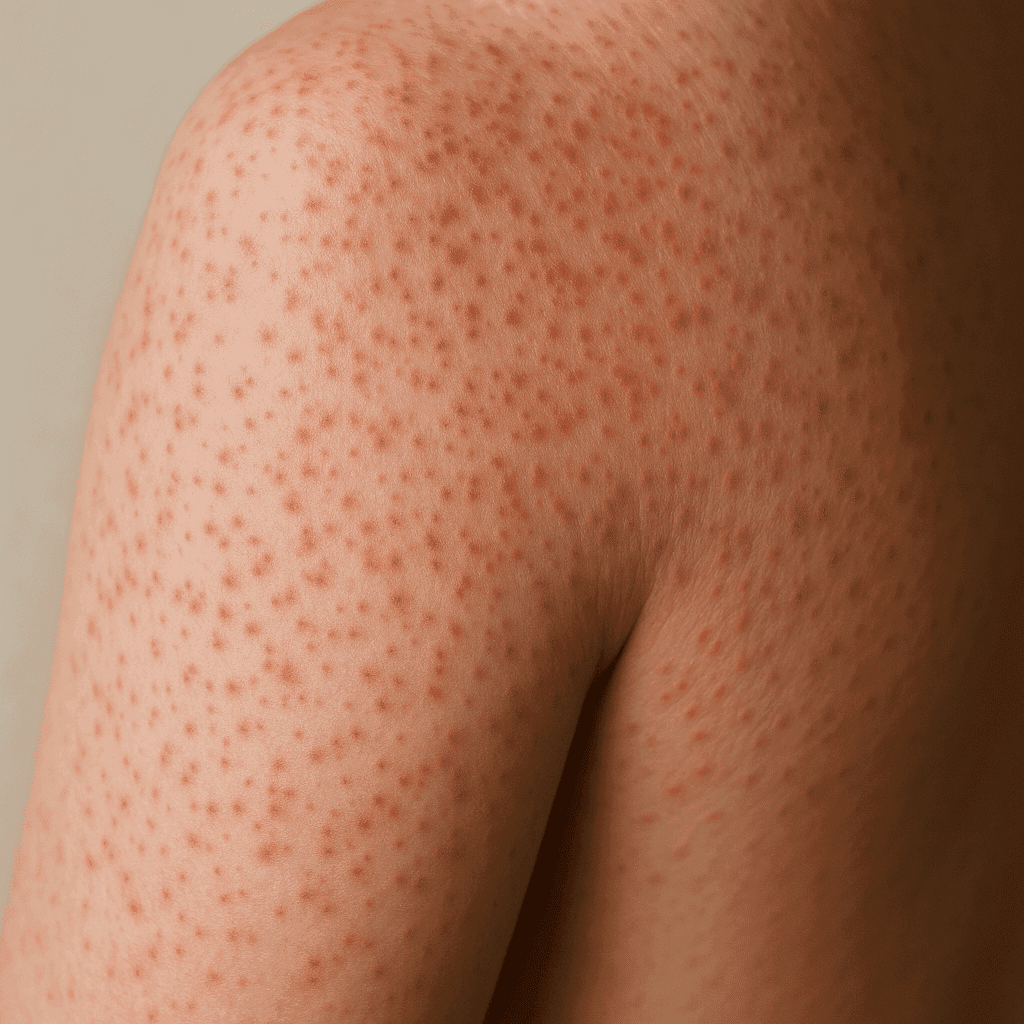Red rash on the body - causes, symptoms, treatment and prevention
Introduction
A red rash on the body can be a worrisome symptom, regardless of a person's age or health status. It can occur suddenly or develop slowly over several days. It is often accompanied by other symptoms, such as itching, burning or swelling. In this article, we will take a closer look at the causes of red rash, as well as ways to diagnose and treat it.
A red rash can be a symptom of many conditions, from allergies to viral infections. Understanding what can cause it is key to responding appropriately and minimizing the risk of complications. It is worth paying attention to any skin lesions, as they can be a signal that the body needs our attention.
Causes of red rash
Red rash can be caused by a variety of factors. Skin allergies, such as contact dermatitis, are a common cause. They can be caused by contact with an irritant, such as metal in jewelry or chemicals in cosmetics. Another form of allergy is urticaria, which can appear suddenly as a result of a reaction to allergens such as foods or medications.
Viral and bacterial infections
Viral infections, such as chickenpox or measles, often manifest as a red rash. In the case of chickenpox, the rash usually begins as small red spots that develop into fluid-filled blisters. Measles, on the other hand, is characterized by a rash that starts on the face and spreads to the rest of the body.
Environmental factors
Some people may experience rashes as a reaction to environmental factors, such as the sun or air pollution. Reactions to the sun, known as photodermatoses, can cause an itchy rash after UV exposure. Air pollution can also lead to skin irritation.
Symptoms accompanying red rash
A red rash is often only one of many symptoms. Itching and burning are the most common accompanying complaints. They can lead to persistent scratching, which in turn can cause additional skin irritation and infection.
Other accompanying symptoms include fever and chills, which can indicate a viral or bacterial infection. If these symptoms occur, especially if they appear quickly and intensely, it is worth consulting a doctor. Swelling and redness may indicate an allergic reaction or inflammation within the skin.
Diagnosis of red rash
Determining the cause of the rash often requires consultation with a doctor. A visit is recommended especially if the rash persists or worsens. Allergy tests can help detect food or contact allergies, while blood tests can rule out viral or bacterial infections. Diagnosis is key to effective treatment and prevention of recurrence.
Treatment of red rash
Treatment of the rash depends on the cause. Antihistamines are often used for allergies, relieving symptoms such as itching and swelling. In more severe cases, doctors may prescribe corticosteroids to help reduce inflammation.
Home remedies to relieve symptoms
There are many home remedies that can help relieve the symptoms of red rash. Baths with soothing additives, such as oatmeal or baking soda, can provide relief from itching. It's also important to avoid irritants, such as harsh detergents or perfumes, which can aggravate skin conditions.
Preventing red rashes
Avoiding allergens and protecting the skin from external factors are key elements of prevention. Using UV sunscreen and moisturizing the skin can help prevent rashes associated with sun exposure. Regular moisturizing of the skin helps maintain its protective barrier, which reduces the risk of irritation.
Red rash in children
In children, a red rash can have many causes, from allergies to viral infections such as chickenpox or rubella. For children, it is especially important to monitor symptoms and consult a pediatrician if in doubt. Children are more susceptible to infection, so special precautions are necessary to prevent the spread of infectious diseases.
Red rash in adults
In adults, the causes of the rash can be more varied, including stress, reactions to medications or autoimmune diseases. Differences in symptoms and causes can affect the specifics of treatment, so it's important for adults to also be aware of potential risks and consult with doctors as needed.
Summary
A red rash can be a symptom of many different diseases and conditions. The key to dealing effectively with a rash is to understand its causes and to take prompt steps to treat it. When in doubt about when to seek medical attention, it's a good idea to consult your doctor to make sure you're getting the right care.
FAQ
Is every red rash a cause for concern?
Not every rash is necessarily dangerous, but it is worth watching for its development and accompanying symptoms. If the rash persists, gets worse, or is accompanied by other worrisome symptoms, it is worth consulting a doctor.
How soon can I expect improvement after treatment?
The time needed for improvement depends on the cause of the rash and the treatment used. In the case of allergies, the response to antihistamines can be rapid, while viral infections may require several days or weeks for full resolution of symptoms.
Can a red rash be the result of stress?
Yes, stress can trigger or exacerbate rash symptoms, especially in people with a predisposition to skin diseases such as eczema or psoriasis. Stress management is an important element in preventing rash recurrence.

Zobacz także:
